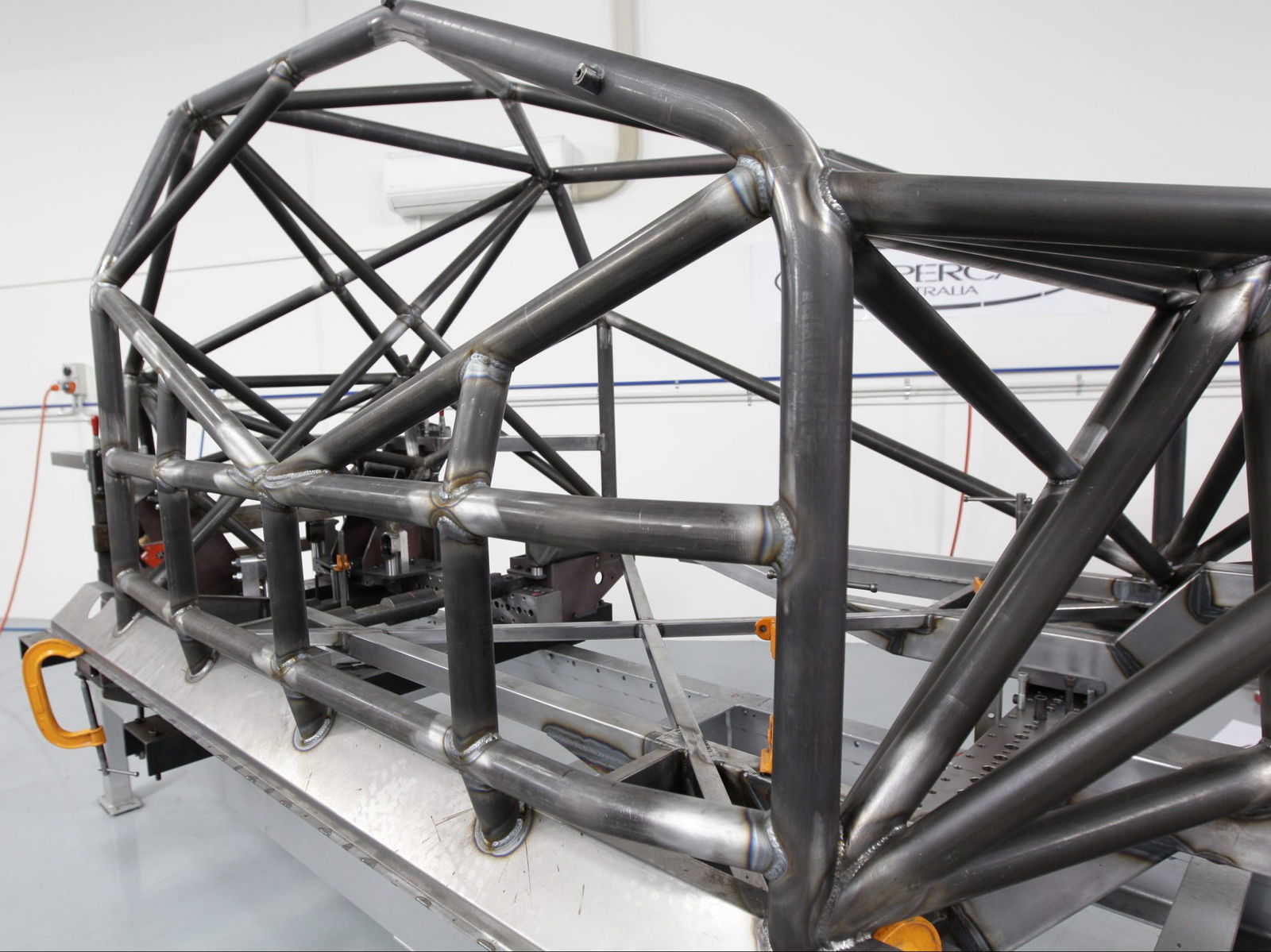

Flexibility and reducing ‘dead ends’ is fundamental to the design of Supercars’ next-generation chassis.
Provisions in the new-look chassis have also been put in place to facilitate the introduction of hybrid technology, though it’s not guaranteed electrification will come to the category.
The category will remain solely powered by V8 engines, though entries are being given flexibility in regards to engine configurations with optionality for quad cams, single cam, pushrod, and flat-plane crank set-ups.
John Casey, Supercars’ Chief Sales & Marketing, has been part of the Gen3 working group spearheading the new project.
Speaking with Speedcafe.com, Casey said the larger fuel tank is one element in the goal of creating a chassis that gives championship organisers greater choice.
“It gives us optionality, so options of longer stints,” Casey explained.
“Mind you, I think we’ve proved the point this year, I think you can have some pretty exciting sprint races.
“It’s one of those things where if you can, you do.
“If there was a specific reason it would be to give us optionality around being on track longer, but whether or not that would be employed I can’t say.
“From a design perspective, you try and reduce the numbers of built-in dead ends that you design into things.
“That’s one arena. hybrid ready, accommodating bigger fuel tank, some of the safety extraction technology, that kind of thing.
“When you’ve got the option that you could build them in from scratch, then you do it.”
The championship will introduce the Chevrolet Camaro ZL1 when Gen3 arrives in 2022, effectively replacing the Holden ZB Commodore as the category’s sole GM product.
That will be homologated by Triple Eight Race Engineering, the same group behind the ZB Commodore.
More details surrounding the development of Gen3 are expected to be revealed in the coming weeks.
It is anticipated the first prototype chassis will be built by March.
It is hoped a complete Supercar under Gen3 will cost less than $350,000 under the new regulations.






















Discussion about this post